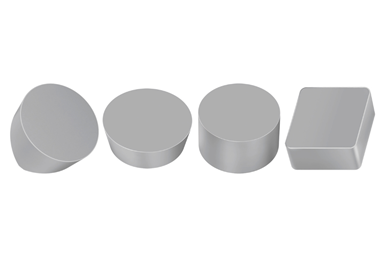Walter Ceramic Inserts Enable Efficient Turning, Milling
Suitable turning and milling applications of the WIS30 ceramic grade include roughing, semi-finishing and finishing, as well as interrupted cuts.
Walter’s new indexable inserts comprising the WIS30 ceramic grade are designed for both milling and turning operations. Based on the elements silicon (Si), aluminum (Al), oxygen (O) and nitrogen (N), the SiAlON ceramic inserts with high aluminum content are effective when machining super alloy materials (ISO S workpiece group), such as Inconel 718, Rene, Hastelloy and Waspaloy.
Suitable turning and milling applications include roughing, semi-finishing and finishing, as well as interrupted cuts. The axial depth of cut (ap) is up to 0.197" (5 mm). The ceramic indexable inserts, with chamfer, have a rounded cutting edge (hone E) for a soft cutting action or a tough cutting edge (T-land T01020) for heavy-duty machining operations.
The insert styles include C-style inserts and round inserts (CNGN, RCGX, RPGN and RNGN). CNGN, RNGN and RPGN are standard ISO negative and positive inserts without a screw hole, while the RCGX is a positive clearance insert with a triangular prismatic base for exceptionally strong insert pocket. The high aluminum content in the SiAlON ceramic grade reportedly enables a high level of heat resistance, which is particularly beneficial when turning and milling of super alloys. Longer needle shaped grains and finer grain size compared to WIS10 grade makes the WIS30 grade much higher in toughness, enabling the WIS30 grade to tackle tough applications such as turning of castings with scales and milling applications. In addition, the inserts reduce the cost per cutting edge because of their long tool life.
For milling applications, two new ceramic insert mills have also been released. The M2472 holds positive inserts (RPGN) and M2473 is designed for negative inserts (RNGN). Both the milling holder families have coolant vents for carrying compressed air to extend the tool life of the inserts.
Related Content
-
New Cutting Tool Technology Discovered at Paul Horn Open House
During a tour of the company’s campus in Tubingen, Germany, I and more than 3,000+ others were introduced to a number of new advances the company has made in cutting tool technology particularly as it relates to the medical industry.
-
Parting Off: The Case for Standardizing on Sawing
The value of rotary saw cutting for parting off operations could boil down to simple economics paired with process efficiency gains.
-
Broaching Tool Technology For Lathes Used to Slot Inconel Parts
This shop finds value in using an indexable-insert-style broaching tool to create blind-hole slots in heat-treated Inconel aerospace parts on a CNC lathe.






.png;maxWidth=300;quality=90)







